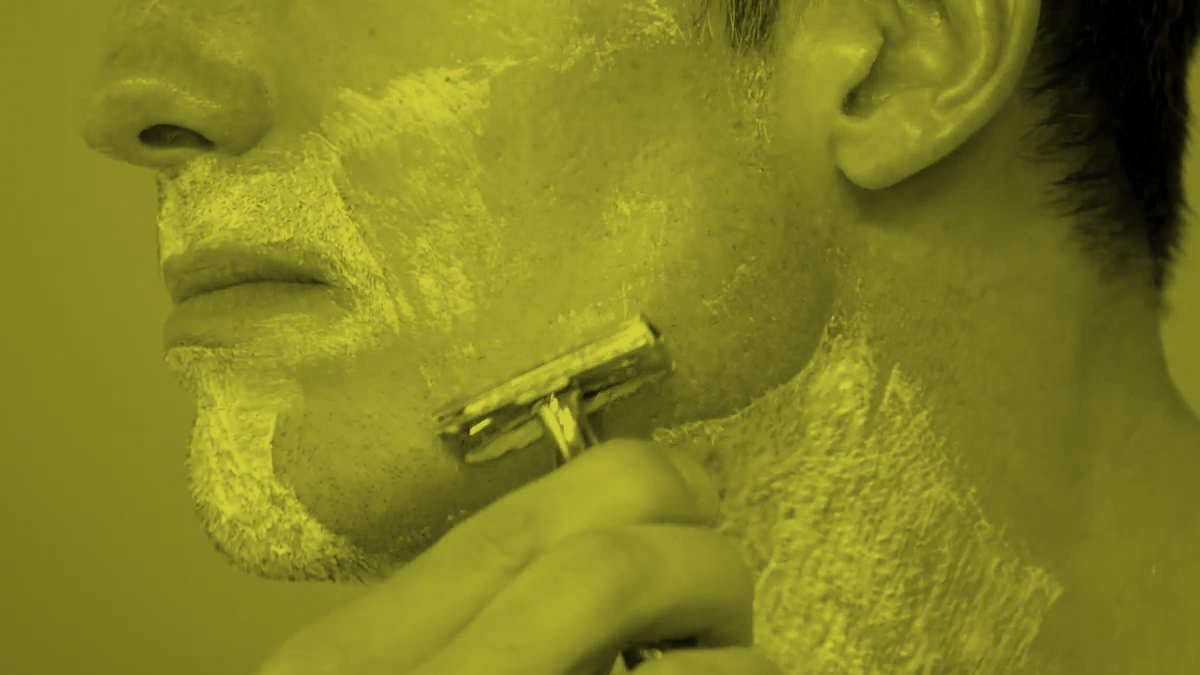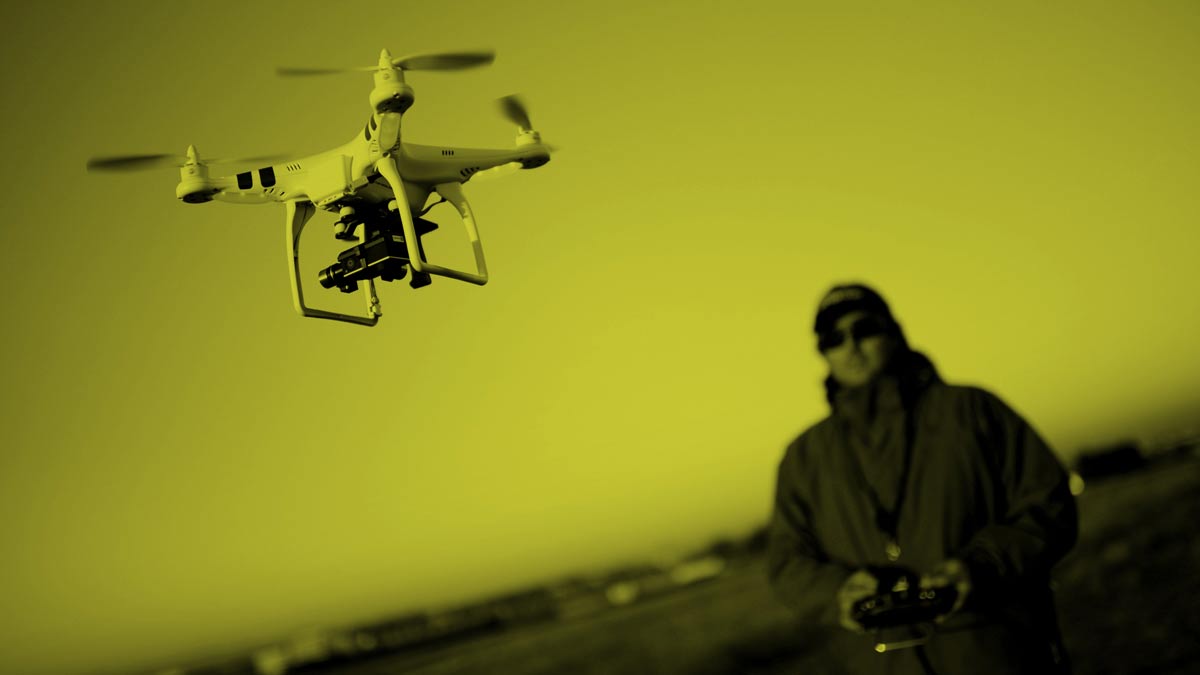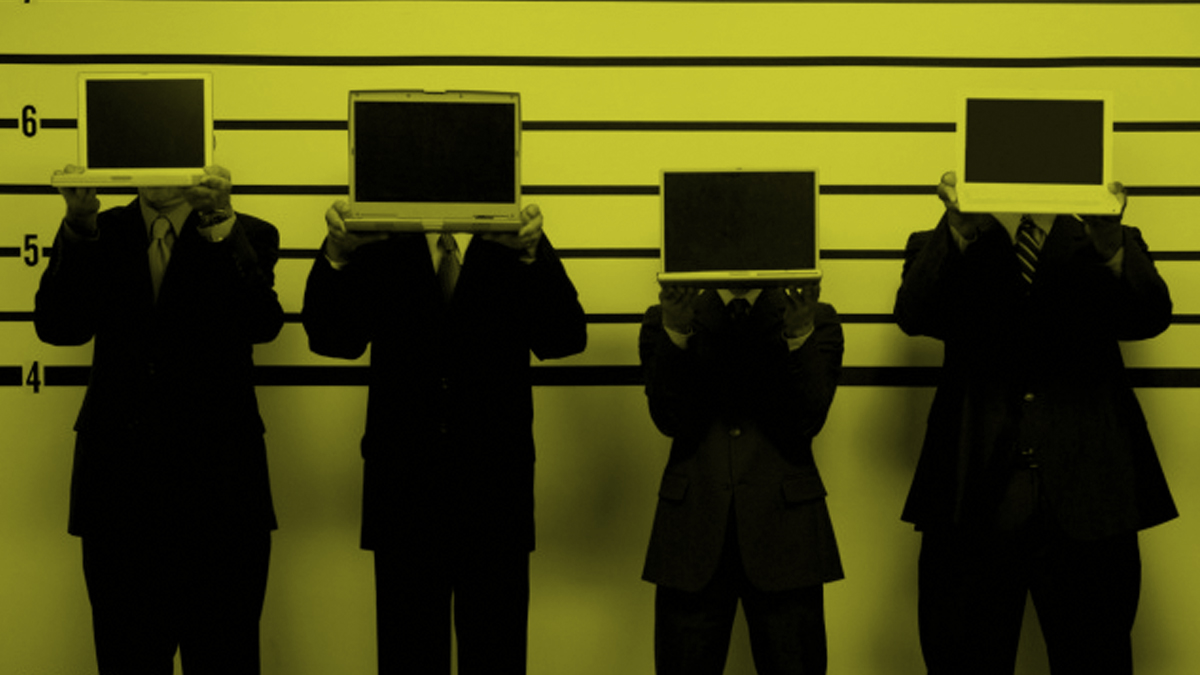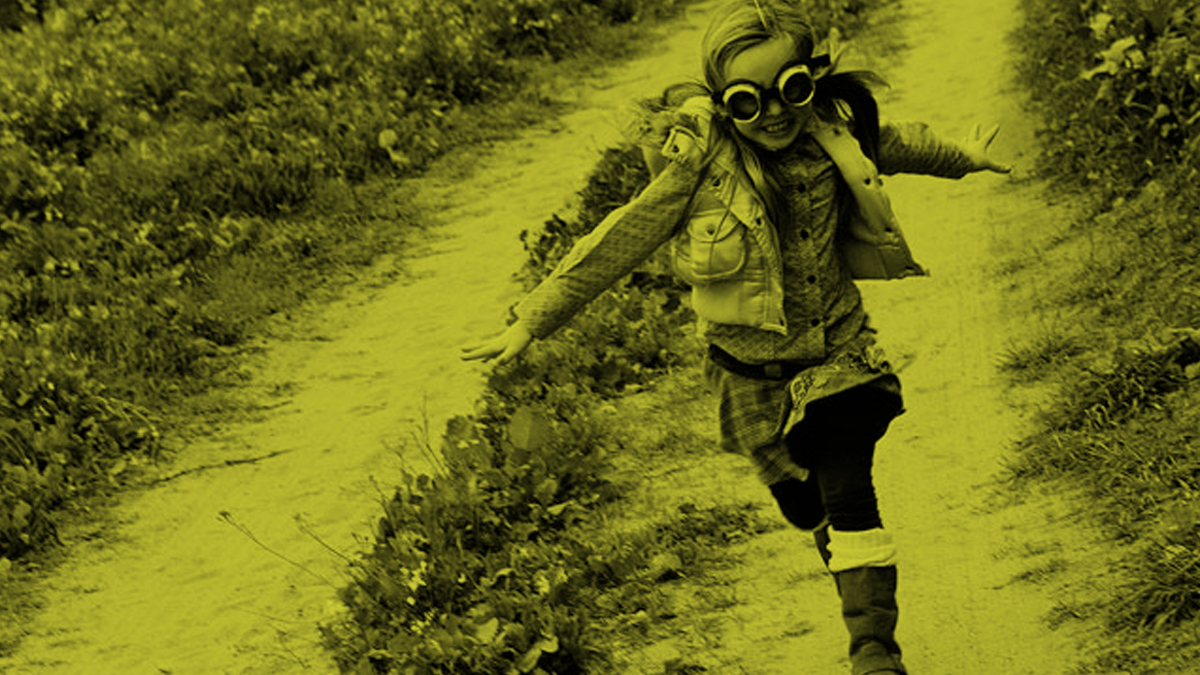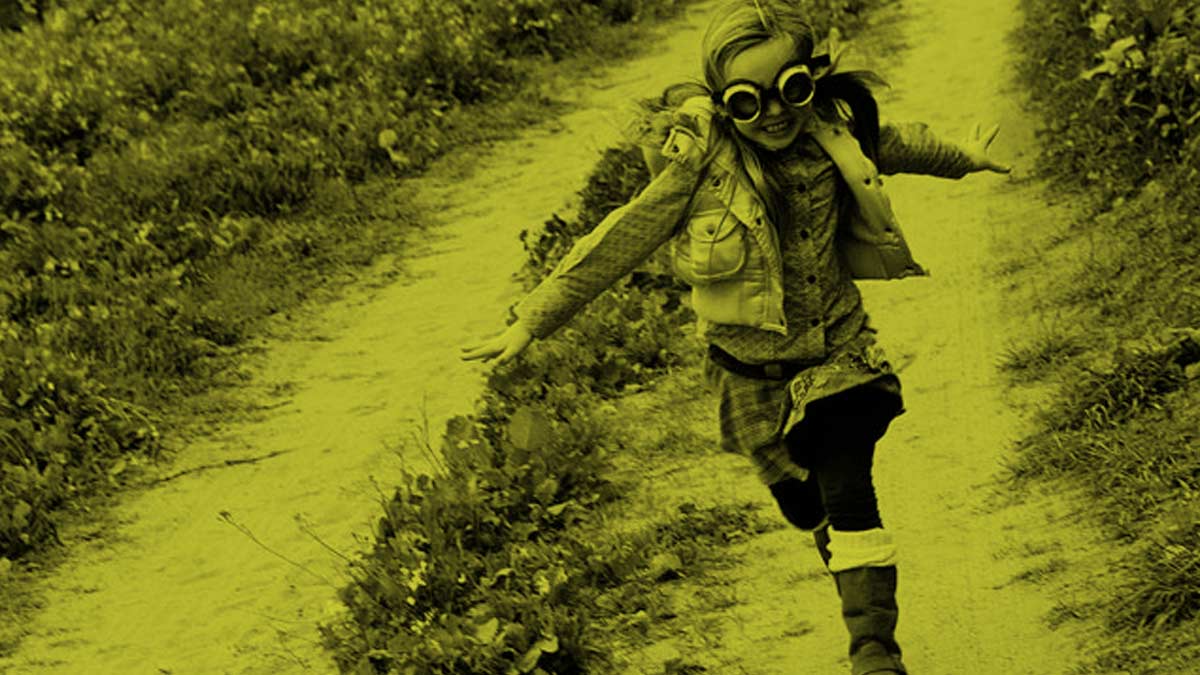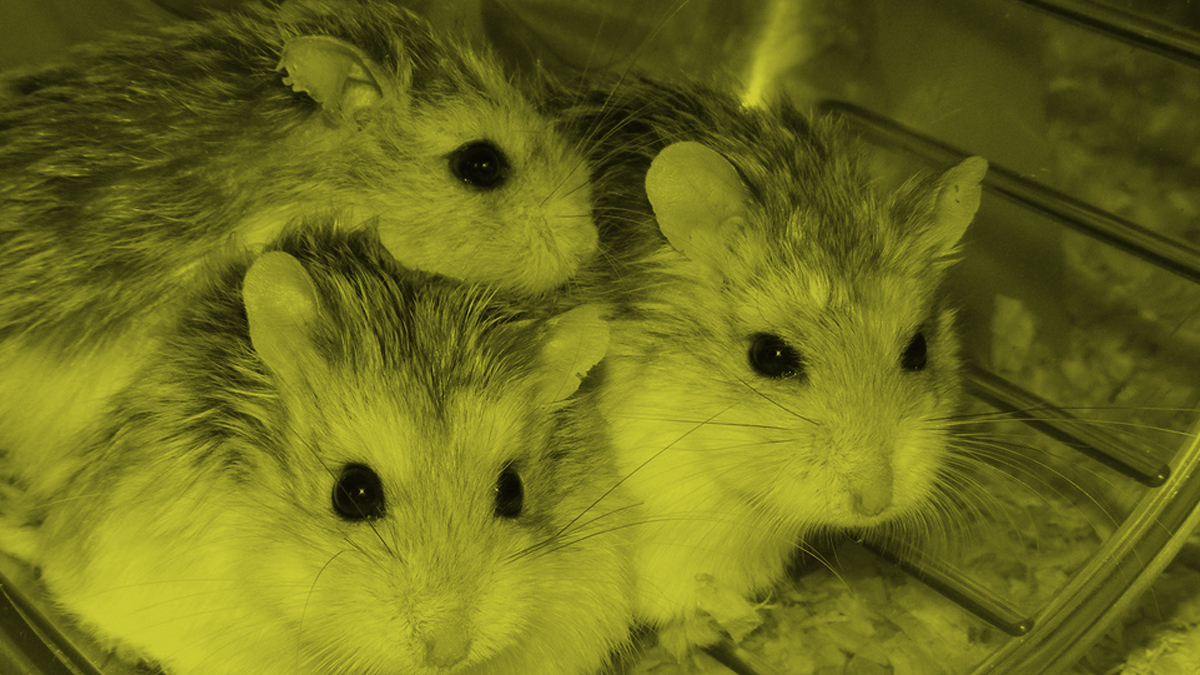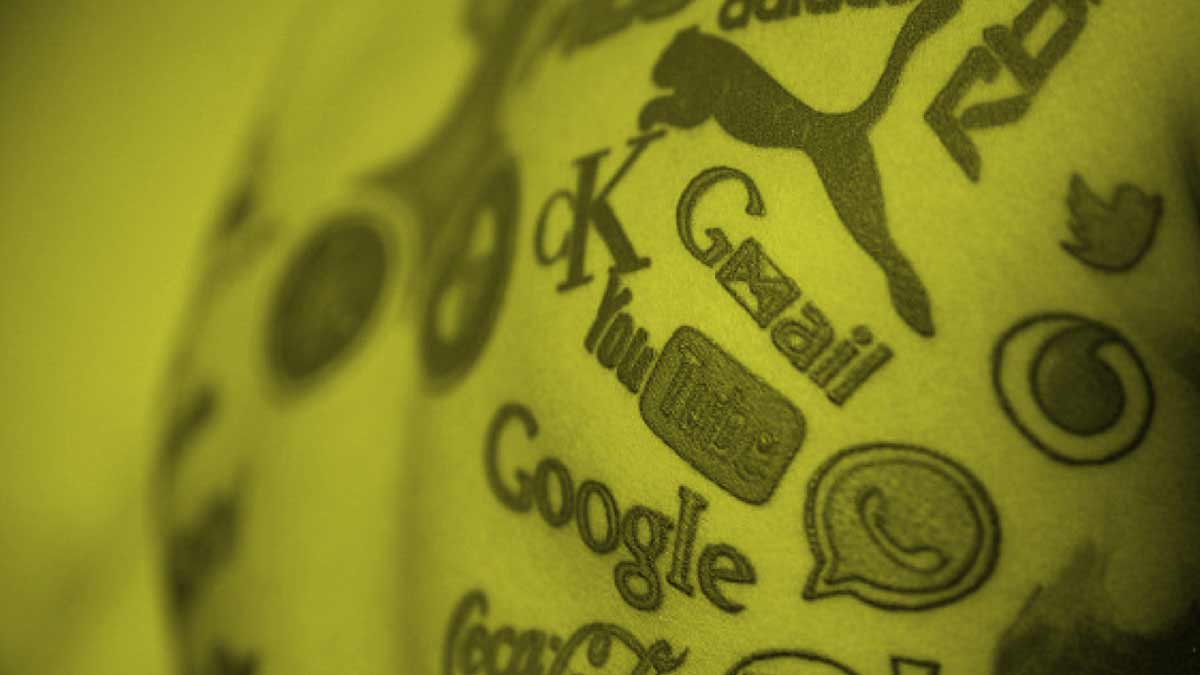The Shark and the Chumsicle
When feeding off new trends you have to strategize where you want to play. Do you want to be the first to sink your teeth in? Do you know where are you are in the food chain?
Sharks are trendy. There is a shark feeding dive I do in the Bahamas where they use a 3ft. ball of frozen fish chum (yum!) suspended from a float in 40 feet of water. They rev the boat engines like a dinner bell. In a blink of an eye there are 60 sharks milling around.
The sharks start circling the “chumsicle” in a wide rotating arc. You get to join in and swim along side them. They don’t even notice. The sharks are busy strategizing.
Soon the most ambitious peel off and attack the bait. But they have a hard time because the chumcicle is still frozen. Later, it begins to thaw and the action gives new meaning to the word “frenzy”. At the end, when the ball is dwindling, the remaining sharks fill up on what’s fallen to the sandy bottom.
When feeding off new trends you have to strategize where you want to play. Do you want to be the first to try to sink your teeth in? Do you want to join when it’s a frenzy, the food is flying and the competition is the fiercest? Or do you exercise patience and benefit from the work of others? There is no one correct answer. You just have to commit to where you want to be in the food chain.
photo credit: where2wander.com
Your Wolf Pack
What can you learn from wolves that will help you succeed in your business? I'll tell you, and it's not what you think.
There is a behavioral phenomenon in wolves called the Beau Geste Effect. When a wolf begins to howl, his pack mates will begin to howl also. However, when they join the chorus, they don’t howl in the same tone. They pitch their howl up or down an octave - modulating the tone mid-howl. It makes the pack sound larger than it is.
During the Civil War, General Ulysses S. Grant wrote that judging from the nightly cacophony, "a pack of twenty wolves" had been shadowing his unit. When the pack was eventually spotted, it turned out there weren’t twenty. There were two.
When you make yourself appear larger than you are, two things happen: 1. You stake out your territory and lay claim to its resources…and 2. You give the competition second thoughts about messing with you.
Entrepreneurs and creative professionals are leveraging social media, blogs, articles, podcasts and video to multiply their voices and appear larger than they might be in reality.
Ruling your niche is a smart move. Being small is no excuse for not owning your neck of the woods. What more can you do to keep the competition at bay?
Control vs. Creativity
Driverless cars are off to a bumpy start. The newest vehicles are racking up a crash rate double that of cars driven by humans. So what’s the problem? It comes down to control vs. creativity
Driverless cars are off to a bumpy start. The newest vehicles are racking up a crash rate double that of cars driven by humans.
So what’s the problem?
The problem is they obey the law all the time. This may not sound like a bug, but it turns out not following the rules is sometimes the best answer. Just try following the rules while merging onto a chaotic highway at rush hour. Following the rules doesn’t work out so well when no one else is following them.
Sometimes you have to think creatively to be successful.
So how much should the car break the rules? Answer: Just enough to do what’s right. Somewhere in the valley there are a lot of AI programmers losing sleep trying to figure out how to make that happen.
When it comes to leadership in business the problem is the same. When you empower people and give them control over decision-making, most often they will simply choose to do what’s right. Or should you issue commands to follow the rules no matter what? It’s Control vs. Creativity.
How can creativity drive your success?
Simply Genius
There was a mansion just across street from my studio. I always was curious how they got so rich. So, one day I decided to ask one of their gardeners.
When I was in art school there was a mansion just across street from the printmaking studio. Looking out of the window at night I would often see a man hosting opulent parties. Waiters. Tuxedos. The house had a full-time gardening staff even though the house sat on only about a quarter of an acre of land.
I was always curious how he got so rich. So one day I decided to ask one of the gardeners.
The owner of the house had the patent on the twist tie. A little piece of wire covered in plastic. Whenever anyone used a twist tie, a few cents would end up in this guy’s pocket. I couldn’t be jealous because this guy was obviously a genius.
Innovation is born of necessity. He had a lot of bags. And damn it if stuff wasn’t always falling out of them. What to do? The solution was incredibly simple.
Design is a process of subtraction. Good design becomes great design when there is nothing left to take away. When it offers the solution to the problem in the simplest possible way. Has your brand’s design become overcomplicated? Is it time to simplify?
A Smell That Will Make You Money
Scientists have proven you are 100 times more likely to remember something that you smell than something that you see, hear or touch.Now brands are increasingly putting the power of scent to work.
Last week I was cooking a recipe that called for coconut oil. When I opened the jar I was immediately transported to being 16 years old on a beach in Michigan putting on suntan lotion. I almost got smell memory whiplash.
Smells are processed by the amygdala, the part of the brain responsible for memory functions and processing emotions. Scientists have proven you are 100 times more likely to remember something that you smell than something that you see, hear or touch.
Now brands are increasingly putting the power of scent to work.
In Orlando, a company recently projected "waffle cone" smell adjacent to an ice cream parlor, driving a 50% sales increase. REI used the smell of “campfire and pine” and guess who started selling more backpacks? Don’t even get me started about what Cinnabon does. You know what they do.
Do you have a service or product that you can enhance with a scent? If you do, you might be closer to smelling success.
Schrödinger's Cookie
Marketing folks know that any time you create a line extension, one consideration is whether or not it will cannibalize your mainline product. However, the greatest worry is always: “Will it degrade the brand?”.
Pop quiz. When I say these flavors, what do you think of? Biscuits and Gravy, Greek Gyro, BLT, Cappucino and NY Reuben. Well, I’ll tell you what I don’t think of. Lay’s Potato Chips. But that’s what they are. The result of Lay’s “Do Us Flavor” campaign of limited-edition chips.
OK, let’s try again. Jelly Donut, Mississippi Mud Pie, Raspberry Danish, English Breakfast Tea and, wait for it…Swedish Fish. Give up? Oreos.
Marketing folks know that any time you create a line extension, one consideration is whether or not it will cannibalize your mainline product. However, the greatest worry is always: “Will it degrade the brand?”.
New flavors can breathe life and excitement into somewhat boring consumer staples. Happily, they give their social media teams something to tweet about. But they beg the existential question: When does an Oreo become not an Oreo? When does it become a parody of itself?
Experimentation and innovation energize and revitalize brands. But care should be taken that we don’t try too hard to fix something that isn’t broken. I mean, yesterday I walked by Pumpkin Spice Twinkies in the store. Is nothing sacred?
A Close Shave
Blind loyalty to a brand can come back to bite you. I’ve known I’ve been getting ripped off for a while. But I just never did anything about it. Now I feel violated.
The viral video from Dollar Shave Club came out 5 years ago, so I’ve known I’ve been getting ripped off for a while. I just never did anything about it.
Gillette had me hypnotized into thinking that ever-increasing blade counts and handles with more foils than a Lamborghini translated to a shave only their product could achieve. Call me a slow learner, but I didn’t realize the extent of my stupor until Saturday.
That's when I walked into CVS to get cartridges for my aging Trac II razor. $32.99 for ten cartridges. No handle mind you, just bits of plastic with two blades at $3.29 each. I felt violated. My brand loyalty and my perception of quality got nicked by reality and I needed a styptic pencil.
A few days later, my new steel safety razor and 100 single-edge blades (at 5 cents each) arrived from Amazon. Wouldn’t you know it, with a little practice the shave I got from a 5 cent razor was just as close - and as a bonus, the luxurious feeling of the weighty steel handle was intensely satisfying.
Don’t get me wrong, I value quality, design, performance and technology. When you deliver them to me consistently I am the most devoted of brand evangelists. But when a brand begins to take advantage of that devotion, delivering the same results at a 6400% premium and are banking that I won’t notice (and I didn’t), let’s say I felt double razor burned.
How are you honestly earning your customers and clients devotion?
I'm Watching You
In business and design we often develop a products by thinking about our customer target and then creating something we think they will want. But often we land far off the mark and wonder what went wrong.
Over a period of 6 years, the photographer John Thackwray photographed the bedrooms of 1200 millennials from around the world. The range of physical environments, materials, colors and collections is absolutely fascinating.
In business and design we often develop a products by thinking about our customer target and then creating something we think they will want. But often we land far off the mark and wonder what went wrong.
What went wrong lies in the difference between thinking and observing.
Successful marketing relies on an intimate knowledge of your customer. You can’t learn what you want to know by asking them, because what they say they want and what they end up buying is often very different. Just ask someone who runs focus groups.
You have to observe them.
After looking at the bedroom photograph of just one of these millennials, I guarantee you could design a product experience that would delight them.
I am sure you have thought long and hard about your customer but have you really observed them?
The Secret
In a world of failing small town main street businesses, this little soft-serve stand is rock solid. Why?
Soft-serve ice cream is simple. Chocolate, vanilla, chocolate-dipped, sprinkles. Like I said, simple. No secrets.
Last weekend my wife and I were biking on a rail trail in the Delaware River Valley. It was hot, so we stopped at a little Mom and Pop soft-serve stand. I mean, why work off the calories if you can’t put a few back on?
They had 21 flavors of soft-serve. Twenty. One. Every flavor you usually find at a regular scoop ice cream parlor, rum raisin, pistachio, rocky road, they had it, but in soft-serve. I’d never heard of such a thing.
So I got butter pecan and it was…amazing. What kind of soft-serve innovation voodoo magic have these people stumbled upon? Why does the entire world not know about this?
I’ll tell you why. They don’t tell anyone. Oh sure, everyone for 25 miles around knows about them. In a world of failing small town main street businesses, this little soft-serve stand is rock solid. Why? Because they have a complete lock on the market. No competition. Anywhere.
A wildly successfully business isn’t always about scale or marketing. It’s about having a secret. Inside every business there is at least one secret that is magic.
Let’s uncover yours.
This Is Why You Need A Drone
Companies trying to create brand strategies internally are hampered by the same thing: a lack of perspective. They’re just too close. Strategic accuracy requires an aerial view
During our town’s 4th of July fireworks I noticed something new. Little red lights up in the sky over the crowd. Aliens watching the festivities? Nope. Drones. Filming the fireworks from just outside the explosions.
High in the upper canopy of the Amazon, hovering above an active volcano, helping search and rescue teams, drones are giving us a new perspective. Perspectives we couldn’t get without their help.
Companies trying to create brand strategies internally are hampered by the same thing: a lack of perspective. They’re just too close. Strategic accuracy requires an aerial view to understand not only what the brand is about, but its competitive landscape and its customers.
Company insiders can create blindspots. CEO’s and CMO’s have strong ideas about what their company is or is not. Only an outsider has the independence to evaluate, recommend re-thinking, or even setting aside these preconceptions.
Branding agencies are like drones. They can give you that birds-eye perspective you simply cannot have no matter how high up you are in a company. Would your company benefit from seeing the fireworks from a different perspective?
photo: NANO CALVO/CORBIS
The Prince Needs A Logo
He sent me a detailed project brief. I sent him a proposal. He accepted it no questions asked. I thought this was a little odd, but I told myself everyone deserves an easy client once in a while. Don’t they?
Last month I got an email from a guy starting a furniture importing business. He needed a logo and pamphlet for his first trade show. Our phone connection was terrible, but he agreed without hesitation to my estimate of what it would cost.
He sent me a detailed project brief. I sent him a proposal. He accepted it no questions asked. I thought this was a little odd, but I told myself everyone deserves an easy client once in a while. Don’t they?
He wanted to pay the 50% deposit immediately by credit card. He was in a hurry. Too big of a hurry. I sent him the invoice. Then I got the email. It said: “I am going to pay you immediately, but I need a favor.”
That’s when I knew I was getting scammed. They want to pay you extra, then ask you to send the extra funds to another contractor for them. Then they dispute the credit card charge, and you’re out the money you relayed.
So I emailed a reply asking if by chance he was also a Nigerian prince. He never wrote back.
I keep telling myself I should have see it earlier. No clients are that easy. No clients ask no questions. But I mean, who scams design agencies? Who sets up a grift by asking for a logo and a pamphlet? A prince does apparently.
photo source: www.thetechbreak.com
All The Feels
Branding 101: When you speak to someone’s emotional center rather than their logical mind you solicit a response that is stronger, deeper, longer-lasting and primal.
Recently, I worked with a client who specializes in shipping stuff to and from Latin America. Experts in Third Party Logistics. Their competition’s websites are full of online calculators for weights, fees, dates, lists of countries. Lots of data. My client’s website is not. Their website talks about things like how it feels when your boss congratulates you for hitting that impossible shipping deadline.
In the book “Brand Immortality: How Brands Can Live Long and Prosper”, the authors analyzed 1400 case studies of advertising campaigns. They found that campaigns with purely emotional content almost doubled the performance of ads with only rational content. 31% vs. 16%. We act on what we feel. Not what we think.
When you speak to someone’s emotional center rather than their logical mind you solicit a response that is stronger, deeper, longer-lasting and primal.
That’s why I always counsel my clients on how critical it is to know their customers motivation. Not only what functional problem they want solved, but how they want to feel when that happens.
Because the feeling is what they are seeking. Security, joy, safety, recognition. If you can describe and deliver the feeling, the mind will follow.
photo credit: Alk3r@flickr.com
Video Is The New Black
It's estimated that 80% of all content consumed on the web will be video by 2020. To the entrepreneur, brand owner or creative professional, “video is the new black”. The once nice-to-have is now a requirement to remain competitive.
When I was 11, I filmed an epic disaster movie in my basement on a Super 8mm camera. It was called “Ball!”, and told the story of a Godzilla-sized Nerf basketball that destroyed an entire town, which consisted of my slot car race track, HO gauge train set and a lot of plastic army men. I used a lot of lighter fluid. Let’s just say it’s a good thing there weren’t smoke detectors in those days.
At the time, my friends and I were drawing lots of robots and war scenes on paper and sharing them with each other. Needless to say the screening of “Ball!” for my buds put me in a class of my own in the storytelling department. Because my story was moving.
It's estimated that 80% of all content consumed on the web will be video by 2020. Gulp. Facebook, YouTube, Snapchat, Netflix, Hulu, Amazon, Instagram and their mother are now starting to stream original programming. Not happy with being merely platforms, they are jumping into being content creators.
Video is the new black. The nice-to-have is now a requirement to remain competitive. For the entrepreneur, brand owner or creative professional the important question is: Are you moving yet?
photo credit: Philip VanDusen
A Hamster Wheel In The Forest
If you take a proven concept and place it in a new context, you may find out things about your audience that you didn’t know. What actually motivates them. What they are really thinking. Why they are responding the way they do.
Scientists recently did an experiment. What would happen if you put a hamster wheel out in the forest? No food. No red button to press to get a treat. Just the wheel, an open door and a motion activated cam.
Mice, rats, shrews, voles, lots of little guys who were obviously not getting enough exercise showed up. They ran. They came back again and again. It turns out hamster wheels aren’t just for the incarcerated. When the scientists took it away, they all kept showing up wondering why the gym had closed.
If you take a proven concept and place it in a new context, you may find out things about your audience that you didn’t know. What actually motivates them. What they are really thinking. Why they are responding the way they do.
Contextual awareness is the next major hurdle in marketing. The goal is being aware of your customers changes in location, behavior, interests and needs at any given moment, as those moments change. Do you truly understand what makes your customers tick?
photo credit: Philip Roberts @flickr.com
Just Keep Swimming
The athletic marketplace is looking a lot like a reef these days. With the imminent demise of traditional sporting goods retailer Sports Authority, there is blood in the water.
I was scuba diving in St. Croix a couple of weeks ago. Lionfish are an invasive species in the Caribbean and they are eating all the other fish - absolutely decimating reef populations. They’re evil. So whenever you go diving these days you take a speargun. Because while you’re out having diving fun, you are also always hunting lionfish.
When you spear a lionfish, sharks, who can smell a single drop of blood in an olympic-sized pool pick up the electric impulses and soon show up hoping for a free meal. So you have to keep your eyes open. Because when sharks arrive after hearing a dinner bell, they are let’s just say, frisky.
The athletic marketplace is looking a lot like a reef these days. With the imminent demise of traditional sporting goods retailer Sports Authority, there is blood in the water. Athleisure brands like Under Armour, REI, Athleta and Sweaty Betty are circling, taking advantage of the opportunity and snapping up new customers as lifestyles and tastes change.
It’s survival of the fittest. Design and strategic branding are powerful assets for customer acquisition, but so is just paying attention when someone else is getting speared.
photo credit: lionfish: keywestaquarium.com
Under Your Skin
Branding is a lot like tattooing. It’s far better to think it through and make the investment than to cobble it together bit by bit.
My wife Beth has some tattoos, a few different styles, added at different times, and scattered about. One cluster she wasn't happy with anymore. She decided to join them together into a single design that was unified and had continuity.
In the tattoo world, they call this a “cover-up”. But obviously you can’t just start over with a clean slate. You have to incorporate the old designs into the new one in order to hide them.
It’s complicated, expensive and it takes far longer to do than the original. Meaning even more time under the needle. Ouch.
I’ve been working with a entrepreneur who realized the brand presence they have is a bit of a mess. They had developed it piecemeal, designing new elements as they were needed. But as it became larger, the brand became scattered.
As we worked to clarify his brand strategy and create an cohesive design system, it struck me that branding is a lot like tattooing. It’s far better to think it through and make the investment than to cobble it together bit by bit.
Because doing a brand cover-up hurts.
A Better Mousetrap
Peanut butter is the ticket with mice. The trick is to put the trap out without setting it and let them get used to eating from it. Then one day you set it. Brands do the same thing with us.
My next door neighbor has mice. It was a cold winter here in the Northeast and I guess their basement was a little more cozy than the woodpile outside. Their cat, historically a great mouser, has been slacking. It's not healthy to have mice around when you have kids, so they had to set some traps.
Peanut butter is the ticket with mice. The trick is to put the trap out without setting it and let them get used to eating from it. Then one day you set it.
Brands do the same thing with us. Nestle is doing it with their chocolate. We like Nestle's chocolate. We've gotten used to eating it.
So when Nestle announced that they’re going to cut the sugar in their chocolate, they set the trap.
We all know eating less sugar is a good idea. We’ve been packing away a little too much of it for the last few decades. So Nestle is betting that if we know there is less sugar in their chocolate, we will feel better about buying and eating more of it.
Some of us may be smarter, or have more willpower than that. But this mouse likes the cozy warmth of the idea of more chocolate. More chocolate is always better. Snap.
The Revolution Will Be Commercialized
Brands have always capitalized on societal trends. But many covet the prospect of having a deeper relevance, so they weave cultural trigger points into their messages.
In 1968 I had really long bangs. My haircut was modeled after Sandy, from the TV show “Flipper”. That haircut, a paisley nehru collared shirt from Sears, and a huge peace sign medallion from Spencer’s Gifts made me feel like I was participating in the 60’s revolution from my suburban home in Louisville, Kentucky.
I didn’t know it then, but I was a perfect poster boy for the mass commercialization of hippie counter-culture.
Brands have always capitalized on societal trends. But many covet the prospect of having a deeper relevance, so they weave cultural trigger points into their messages. This is a risky line to toe. It’s very easy to be seen as trivializing them, or worse, profiteering from them.
Just ask Pepsi. #Resist-washing is the new green-washing.
Many of us feel deeply jarred by the current climate of political upheaval and global unrest. Brands, striving to be relevant in our lives are trying to show us they care. But can you show me you care without trying to sell me soda simultaneously?
photo credit: public domain advertisement
Let's Co-Everything
The cost and risk of opening a retail presence has always been a significant barrier for brands just getting started. You used to have to go it alone. But now you don’t have to.
From co-working to bike-sharing to millennials co-habitating with their parents, it looks like owning something yourself is just getting too hard.
Going it alone in retail is hard, too. Just ask American Apparel. One of the fastest growing US companies only a decade ago, they are now closing their doors. They hadn’t made a profit since 2009.
The cost and risk of opening a retail presence has always been a significant barrier for brands just getting started. You used to have to go it alone. But now you don’t have to.
There is a co-retailing startup called Bulletin. It helps smaller brands merchandise their products without having to have a brick and mortar store of their own. They divide up a single retail location into smaller sections, from a shelf to half a store, that you can rent month-to-month. It’s brilliant and is smashing the barrier to entry into physical retail.
The new co-economy is giving rise to this kind of innovation every day. Is there a barrier to entry that is standing in the way of you growing your business or creative practice? Take a step back and ask, “How can I co-it?”
photo credit: Sebastien Wiertz @flickr.com
Surprise and Delight
“Surprise and delight” is a phrase you hear in branding an awful lot. For good reason. Turns out, if a brand can make you feel surprise and delight, chances are you’ll part with some cash.
“Surprise and delight” is a phrase you hear in branding an awful lot. For good reason. Turns out, if a brand can make you feel surprise and delight, chances are you’ll part with some cash.
Last week I flew in from SF to Newark and jumped in a Yellow cab. The driver was an older guy who immediately started sharing his life story with me. I was tired and I can’t say I was thrilled. But I wasn’t prepared for what he said.
“I just drive this cab once a week. Because I’m an astrophysicist the rest of the time. I got my doctorate in Berlin. The best place for STEM education. I drive because I have 4 kids in college. Three of them in med school, one in law and I need the money.” So of course I started pinging him with all the questions I had about the universe. Because, well, you don’t get a captive astrophysicist every day do you?
In the 20 minutes it took us to get to my house, I learned: 1. You can tell those 7 new earth-like planets can sustain life simply by the light emitted from them. 2. Life starts on planets as a result of volcanos. 3. There is water in the sun. (I know, but believe me, he can prove it.)
He completely blew away my taxi brand preconception. And he got a handsome tip. Because he truly surprised and delighted me. That and he didn’t drive like a maniac.
photo credit: pixagraphic@flickr.com














